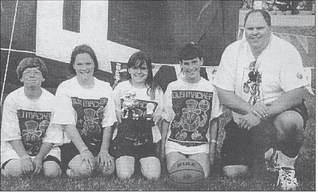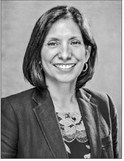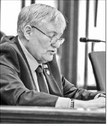Women were there too: Vietnam vet shares her story of trauma, healing, and service
So many veterans’ stories go untold, and they pass away, carrying their stories with them. Veteran Sarah Blum is ensuring that doesn’t happen by telling her story of her time as an operating room nurse during the Vietnam War in her most recent book. Hers is a unique perspective, not only as a female veteran but also as a medical professional coming face to face with the atrocities of war. She hopes that by sharing her story, she can foster understanding and empathy for our nation’s veterans, and offer encouragement to those struggling with post-traumatic stress disorder (PTSD), to know that healing is possible.
Her newest book, published this year, is entitled, “Warrior Nurse: PTSD and Healing.” Per the description on her website, “This memoir/self-help book takes you into the operating room at the 12th Evacuation Hospital Cu Chi, Vietnam in 1967, during the height of the fighting in the iron triangle as mass casualties with severely wounded soldiers arrive on the table for Warrior Nurse Sarah during mortar attacks, monsoons, and artillery going off.”
“Meet Johnny, hit by American artillery, and Jim, a baseball pitcher with multiple wounds including to his pitching hand. Experience with Sarah her harrowing return home; emerging symptoms; effects of PTSD on the brain, body, and behavior; and essentials for healing, hope, and guidance for anyone suffering from PTSD.”
Blum recently spoke at The Highground Veterans Memorial Park near Neillsville as part of the park’s CAMO (Community and Military Outreach) program. She shared photos from her time in Vietnam, answered questions, and signed copies of her book. She described circumstances both harrowing and unpredictable, which led to her setting her feelings aside in order to meet the demands of the job.
Volunteering to serve in the military was not a hard decision for Blum, as on some level she had always wanted to do so. She recalls a career booklet she made for school at age 9 depicting her as a nurse and showing pictures of nurses for each branch of the military. After working as a nurse for six years, in 1966, Blum decided to serve in Vietnam. She went to basic training in New Jersey and then completed a five-month operating nurse course in San Francisco. Although she learned a lot, it could not fully prepare her for what she would encounter when her boots hit the ground in a war zone.
“I remember the first day I walked into the operating room. The surgeon said to me, ‘Do you want the right side or the left side?’And I said, ‘Sir…?’And he asked me again. And I said, ‘OK. I’ll take this side.’ So I did the same thing the surgeon did. And I was trained to do it, I knew what to do, and how to do it, and I could do it just as well as any surgeon, but it wasn’t what I had thought I was going to be doing. I thought I was going to assist the surgeon, because that’s what the nurse does. But nope, I did the same thing.”
When she wasn’t operating on soldiers, she was caring for their wounds. Many soldiers would step on landmines and their bodies would be littered with pellet wounds. Blum’s first task was to shave the soldier’s body wherever there was a wound, which was usually the whole body. She had her aunt mail her straight razors because they constantly ran out. Then Blum would scrub the body for 20 minutes. She would make a cut over each wound, open it up, and remove the pieces of metal. Next, she would test the muscle inside to see if it was alive, usually by touching it with a forceps to see if it moved. Any dead tissue would be cut out. Next, all the wounds would be irrigated with saline solution and finally bandaged. The soldier would then be moved to recovery, where every four hours he would be given antibiotics and have his wounds irrigated again.
“They would have to have all their bandages removed. As you can imagine, it was very, very painful,” said Blum.
She said her hospital constantly had new patients coming in, so they couldn’t keep anyone longer than five days or there wouldn’t have been enough beds. Once patients were initially treated, they were sent to an evacuation hospital to stay until they could be sent home.
Blum’s task was made more difficult by the lack of supplies.
“The supply situation was terrible. We were always running out of supplies,” she said.
The hospital frequently ran out of light bulbs to operate by, material to cover the chest and abdomen, catgut for sewing wounds, and other necessities.
“We couldn’t throw away our surgical gloves, because we didn’t have enough of them. So we would wash them and hang them on the line to dry, sterilize them, powder them, and reuse them,” she said.
The hospital staff made do with what they had and also learned to live with the constant threat of danger.
“War was everywhere in Vietnam. There was nowhere that was really safe,” Blum said.
She recalled one time where she was in an outdoor, partially enclosed shower and heard an explosion nearby, but didn’t realize it was a mortar. A soldier came and told her she had to evacuate. Soapy and wet, Blum threw on a robe and went slipping and sliding through the mud and downstairs to the bunker. No sooner had she sat down and her eyes adjusted to the dark when a soldier popped his head in and said, “We need Lieut. Blum in the OR right now!” So Blum ran back upstairs, back to the shower, rinsed off, and threw her clothes on.
“I thought I would outsmart them [the enemy], so I ran in a zig-zag course across the camp from my hooch [living quarters] to the hospital,” said Blum. “I thought I would be safe. I made it, so I guess I was safe, because I’m here talking to you!”
She said that was the day she realized she could easily die in Vietnam.
Blum said the hardest part of her job was when she did all she could for a patient but it wasn’t enough. She remembers the triage system they used to treat patients. Those labeled “expectant” were expected to die. When Blum first arrived in Vietnam, the patients could read her face like a book. If they saw in Blum’s expression that they were in serious trouble, it made them even more distressed. As a result, Blum quickly learned to mask her emotions, but by doing so, she was unable to fully process her trauma. She recalls one severely maimed soldier named Johnny who left an impression on her, even if she didn’t know how to articulate what she was feeling at the time.
“With Johnny, we had to take everything off from the high hips down. There was nothing we could save. And we had three surgeons with us. We had the best crew, but we couldn’t. And that was the devastation for me, every time it happened. We just couldn’t save them all. We tried, but we couldn’t… There wasn’t much left of him after the surgery,” said Blum.
When Blum returned to the operating room three days after the surgery and saw Johnny, his bottom half gone, something inside of her broke. She ran frantically out of the hospital and around the base, yelling, “Kill, kill, kill! That’s all you do is kill! Stop the killing!” Eventually one of her fellow nurses was able to get her calmed down and she was sent away to the beach for a few days. Blum found a semblance of peace, although it required her to numb her difficult emotions so she could function.
“I built a wall so I could go back to him and finish out the year. My memories change after that, but I was able to go back and finish what I needed to do,” she said.
In the midst of the intensity and trauma were some special moments. Blum learned to fly a friend’s helicopter. She also was able to get off work the day that Charlton Heston visited the base and shake his hand. She said he was unique among the celebrities that visited, because most were just there for the photo opp but Heston actually cared. He talked to many soldiers and took notes on their family members’phone numbers. When he got home, he called those family members and let them know how their soldier was doing.
Blum also remained in contact with family at home and in January 1968, it was her turn to return home. That brought its own set of issues. For one, a large portion of the public carried strong anti-war sentiments and were hostile towards the soldiers returning home. When Blum arrived at Travis Air Force Base northeast of San Francisco, it was the middle of the night, but the people in charge would not let anyone off the plane for two hours. Only later did Blum find out it was to try to avoid angry protestors. Blum and the other veterans were also advised to change out of their uniforms before leaving because it would be “safer” that way.
“I could not understand the feeling of those who were antiwar activists angry with us… It seemed more appropriate to me that they would be angry with our government for sending us to Vietnam and waging war there, but not to take it out on us,” Blum writes in her book.
She also struggled with how to adjust to a normal, mundane life after a year of having to be on high alert all the time. Upon her return, Blum spent about eight months at Madigan Army Hospital in Tacoma, Wash., before going to university.
“There was no debriefing, no support for us at that point,” said Blum.
“While I was at Madigan, I was fine. But when I left Madigan to go into the civilian world, I didn’t know where fit in. I wasn’t like any of the other women. I couldn’t talk about nails and hair and lipstick. I mean, I had lived with the threat of death every minute of every day for a year and nobody else had that experience. So that was a problem; nobody wanted to hear about it. Nobody wanted to know about it. And I didn’t know what to do with myself. I had shut down my feelings in the war and they were still shut down.
“It literally took me years to get back my feelings and get back to feeling healthy, to be myself. And I have my feelings now, and they come up a lot. And I’ll never shut them down again.”
As Blum has allowed herself to feel again and to share her experiences with others, she has found healing. Blum believes sharing her story is important so other veterans know they are not alone in what they went through, both in their time abroad and in their life back home. But on a more fundamental level, Blum shares her story because many people do not know that women even served in Vietnam.
“To this day, people tell me, ‘No women served in Vietnam.’ It’s a lack of education to the public,” she said. “There were 11,000 to 14,000 women in Vietnam, and most were nurses.”
In April, Blum visited an exhibit in a museum in Tacoma, Wash. It was all about the things that Vietnam veterans brought home with them.
“But there was nothing about women at all — no names, no stories, nothing. They had a talk in the auditorium afterwards and partway through the talk the curator said, ‘I tried to find some women Vietnam vets but I couldn’t find any.’So I waited until the question-and-answer session was done and I walked up, turned around, and said, ‘My name is Sarah Blum. I am a nurse Vietnam veteran.’ And the whole audience erupted. Some of them stood up clapping, and that was unexpected for me. But it was a good thing. And then one man who was a Vietnam vet, he stood up and said, ‘These women never got the recognition or acknowledgment they deserved.’ And he was right about that. And it’s actually still ongoing.”
She pointed out that it took until 1976 for the women who were part of the Bataan Death March during World War II (1942) to get benefits.
The recognition has been slow in coming, but Blum is hopeful to educate more people on the cost of war, for all men — and women — who agree to put on the U.S. military uniform.
“I want more people to know that women were there.”
Biography
Sarah L. Blum is a decorated Vietnam veteran who earned the Army Commendation Medal, and was awarded the Certificate of Achievement for exemplary service at Madigan Army Hospital in 1968. She earned her master’s degree from the University of Washington. At age 80, Blum retired after more than 34 years as a psychotherapist specializing in trauma resolution.
She has led several PTSD and MST (military sexual trauma) management/recovery workshops as part of The Highground’s retreats for female veterans, and has gained recognition across the country for her advocacy and support for veterans of all eras.
Blum has published two books: “Warrior Nurse: PTSD and Healing” (2025) and “Women Under Fire: Abuse in the Military” (2018), a stunning revelation of sexual abuse in the U.S. Armed Forces based on interviews with more than 58 women veterans conducted over six years. Both books are available by searching “Sarah L. Blum” on Amazon.com.



